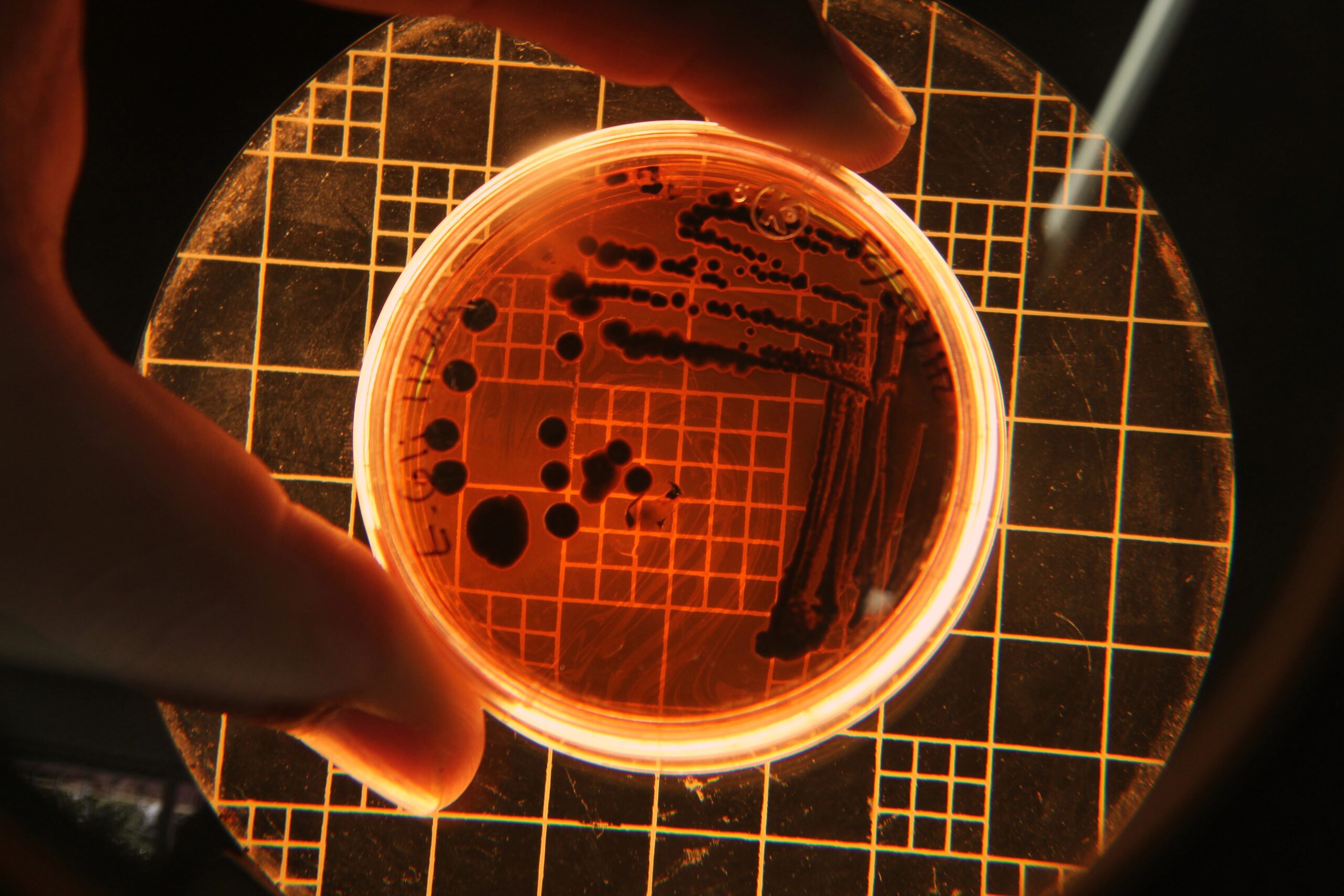17/04/2025
This blog is the fifth part of a series on innovations in the alternative protein sector, providing an introduction to biomass fermentation. To read the previous article in the series, please see here.
For thousands of years, humans have leveraged the power of microorganisms, specifically their anaerobic metabolism of carbohydrates, to change our foods. We put microbes to work to make beer from barley, wine from grapes, and yogurt and cheese from milk, among many other products. Sauerkraut, sourdough, vinegar, pickles, kimchi, soy sauce, miso, kombucha, kefir…the list goes on. We use traditional fermentation processes for preserving foods, producing alcoholic beverages and changing the texture, taste and nutritional properties of food.1
But there are other, newer applications of fermentation for making food. One newer application of fermentation is a process that is analogous to farming, where the microorganisms themselves (i.e., biomass) or the protein the microorganisms contain, is a “crop” that may be harvested for food (or animal feed). This process is known as biomass fermentation, and the “crop” is known as single-cell protein (SCP).1
If you’re familiar with the brands Marmite® (Unilever) and Quorn® (Marlow Foods), then you’re already familiar with SCPs.2 Marmite was first introduced in the UK in 1902, and Quorn has been sold in the UK since 1985.3, 4 Marmite is produced from an extract of spent Brewer’s yeast (Saccharomyces cerevisiae) used in beer production.3 Quorn is produced from the filamentous fungus Fusarium venenatum.2 Both contain protein and various micronutrients, with Marmite, for instance, having a protein content of about 34% by weight.
More generally, several strains of microorganisms – such as yeasts, filamentous fungi (more commonly known as moulds), algae and bacteria – may be used as SCPs. They have a high rate of growth, with doubling times of 0.5-2 hours for bacteria, 1-3 hours for yeast and 2-6 hours for algae, which means that they can produce biomass relatively quickly.5 Moreover, these microorganisms have a high protein content. By dry weight, the protein content can be 30-45% in filamentous fungi, 30-80% in algae, 45-55% in yeast and 50-65% in bacteria.6 For reference, this is comparable to or higher than most meat and seafood, with the protein content by dry weight of chicken being about 24-32% and fish being about 44-78%. In terms of micronutrients, some of these microorganisms can produce certain vitamins, such as B12, which are not found in plant sources, making SCPs an attractive option for those following a vegan diet.
Importantly, and unlike in farming, in biomass fermentation the organisms are grown in bioreactors and not in soil; biomass fermentation is therefore attractive from both sustainability and food security standpoints as it mitigates issues related to land and water usage, and is independent of season and climate. Like farming, the organisms involved may be grown on a carbon source before being harvested and processed.
But what is that carbon source? What do these microorganisms need to grow? Well, it depends specific microorganism – the beauty of biodiversity! Some of them (yeasts, filamentous fungi, and some species of bacteria) are what’s known as heterotrophic, meaning that they need to consume organic carbon sources (i.e., food) from their environment in order to grow. Others are autotrophic, meaning that they are able to produce their own food by fixing inorganic carbon, CO2, from their environment. There are different types of autotrophic organisms, such as photoautotrophs and chemoautotrophs. Algae are predominantly photoautotrophs, meaning that they are reliant on energy from sunlight, CO2 and available forms of nitrogen in their environment to produce food through photosynthesis. Certain species of bacteria are chemoautotrophic – they do not require light to produce food – and can make their food chemically, using CO2 and inorganic compounds. (Gas fermentation by chemotrophs will be the topic of our next blog, so stay tuned!)
Focusing on the heterotrophs, depending on the microorganism, they can be grown to produce biomass on substrates that include sugar or starch. But a promising application for these organisms is growing them on less traditional feedstocks, which can lower production costs, increase sustainability and drive a circular economy. For example, some organisms can be grown on agricultural side streams and waste streams like fruit waste, molasses, methanol and ethanol.7 Moreover, with microbiology and genetic engineering, microorganisms can be selected for, or genetically modified to have, desirable traits, such as the ability to grow on certain feedstocks or rapid doubling times.
Turning now to autotrophs, algae are predominantly aquatic photosynthetic organisms that lack the vascular tissues found in plants. Algae include single-celled organisms, or microalgae (as well as multicellular macroalgae – seaweed is a prototypical example – which is beyond the scope of this blog). Chlorella is a well-known microalgae. Other autotrophic organisms are known colloquially as “blue-green algae.” Actually these are not algae at all but instead a type of photosynthetic bacteria called cyanobacteria. Spirulina is a well-known cyanobacteria. Chlorella and spirulina are frequently referred to as “superfoods,” nutritional powerhouses that are good sources of both protein and numerous vitamins and minerals.
SCP production presents a number of technical challenges, which have spurred innovation in the industry. A summary of some of these challenges follows, followed by brief descriptions of selected patent filings by some innovative companies within the industry.
Strain Development
The first of these is strain development.1 As alluded to above, there are different factors that determine microorganisms’ suitability as SCPs: how fast they grow, how much biomass they yield, what substrates they can be fed, whether they have desirable characteristics in terms of texture, flavour or appearance, etc. Additionally, with certain species, there is a danger of contamination with mycotoxins (toxins produced by fungi) and cyanotoxins (toxins produced by cyanobacteria), so selection of appropriate strains (as well as downstream processing techniques) is essential to food safety.6 Considerable effort must be devoted to screening and development of strains.
The filamentous fungus from which Quorn is made, Fusarium venenatum, was discovered through one such screening process. Quorn’s story began in the 1960s, when Rank Hovis McDougall Ltd (RHM), a company producing flour, was seeking a way to turn surplus wheat into a high protein food. RHM screened over 3,000 samples for how well and how quickly the fungal species they contained could be grown in culture.7 In 1968, the strain that produces Quorn was discovered – it came from a compost heap from a small village south of High Wycombe.8 Quorn was first marketed in 1985 by Marlow Foods, initially a joint venture between RHM and ICI plc. It has been protected extensively by patents.
An early patent with a priority date in 1966, GB1210356, describes cultivation of a fungus to produce edible biomass. GB1346061 and GB1346062, with priority dates in 1970, specify the strain as Fusarium graminearum Schwabe (this was a misidentification of the strain, but the original strain was deposited with the Commonwealth Mycological Institute), and a method for producing edible mycoprotein from a fungus of genus Fusarium. Given that patent terms are 20 years from the filing date, these patents have all expired. However, over the years Marlow Foods (and other entities that have been involved with Quorn including ICI plc, Zeneca Ltd, and Rank Hovis McDougall Ltd) have enjoyed a competitive advantage, both by building a significant technological infrastructure as a first mover and by leveraging the patent system to protect various aspects of the technology for producing Quorn.8
Recently, a UK startup, Algenuity Holdings Ltd, has partnered with Unilever and is developing strains of Chlorella.10 Due to the large amount of chlorophyll in these organisms, Chlorella may have an unpleasant grassy taste, and its deep green colouring makes it difficult to include as an ingredient in recipes. Fortuitously, some species of Chlorella are actually what’s known as mixotrophic. This means that they can be both autotrophic (relying on photosynthesis), or, in the absence of light, heterotrophic (consuming glucose from their environment and using it to grow). This adaptability makes Chlorella an attractive SCP. The fact that strains lacking chlorophyll can still survive in culture under appropriate conditions allows for the development and selection of mutant strains with this desired characteristic.
Algenuity has used directed evolution and selection of strains of Chlorella containing little to no chlorophyll to develop its Chlorella Colours® platform. Colour variants of this Chlorella, which lack chlorophyll but have various levels of other natural pigments, are available in white, yellow and red.11 Relevant patent family filings include WO2020105001, WO2024161108, and WO2021240232. Another company working in this area is Aliga ApS of Denmark, which has filed WO2023285400 to different Chlorella strains having reduced chlorophyll content. Additionally, because various strains of Chlorella have cell walls containing chitin, a polysaccharide that can limit its digestibility in humans, it is desirable to reduce the presence of this component for consumer product formulations: Algenuity’s WO2021240426 relates to modified strains of Chlorella having a reduced chitin content. Canadian company Noblegen Inc., which was acquired by Solar Biotech, filed an application family (WO2021116949) directed to egg substitutes produced from a different genus of microalgae: euglena. These are grown heterotrophically to produce a protein-rich flour with a yellow colour resembling egg yolk.12
Use of newer technologies such as high-throughput methods to screen and select strains, along with bioinformatics and artificial intelligence, are also paving the way to enable innovators to identify new, promising strains with desirable characteristics.1
Feedstocks
A second area of innovation is feedstocks, which are a major source of cost in biomass fermentation processes.1 As mentioned above, from both a sustainability and cost perspective, it is desirable to grow microorganisms on sidestream and waste feedstocks; however this can present safety and regulatory challenges.6,9 Therefore, most heterotrophs are still grown on sugar or starch. Nature’s Fynd is a startup in the US that produces foods from an extremophile fungi, Fusarium strain flavolapis, which was initially isolated from geothermal springs in Yellowstone National Park. This particular species is hearty and very metabolically adaptable to different feedstocks.1,13 Mycorena AB in Sweden, which was recently acquired by Naplosol BV in Belgium, has filed an application family, WO2024136727, to a circular process in which fungal biomass fermentation produces carbon dioxide, which is used as a feedstock to grow algal biomass.
Bioprocess Design
A third area of innovation relates to bioprocesses. These entail designing the bioreactor systems and methods to optimise the growth, harvesting and processing of microorganisms at scale, all while balancing costs and sustainability concerns. Such processes may require careful monitoring of temperature, pH, nutrients, cell density and levels of oxygen and CO2, among other factors.
Two different types of bioreactors are submerged (or liquid-state) fermentation bioreactors (in which microorganisms are submerged in a solution containing the required nutrients, and the solution is agitated or aerated) and solid-state fermentation bioreactors (in which microorganisms are supported on porous solid substrates with continuous gas flow and in the absence or near absence of liquid water). 1,14,15 Solid-state fermentation bioreactors more closely approximate the natural habitat of certain species of fungi. However, this technology is more challenging to scale up because it is delimited by available surface area for cell growth, in a manner that submerged fermentation is not.1,14,15
As noted in a previous blog, there are different strategies for feeding and oxygenating cells and eliminating waste from bioreactors. These include batch processes, fed-batch processes and continuous processes. In a batch process, media is added to the bioreactor only at the start of the process and the cells are grown to their maximum density before being harvested – no additional media is added during the process. In a fed-batch process, additional fresh media is added throughout the process to keep the availability of nutrients from being a limiting factor in the proliferation of the cells. In a continuous process, while fresh media is being added to the bioreactor, media is being removed and cells are being harvested.
Quorn, for instance, is grown using a continuous process, in submerged fermentation air-lift bioreactors. The cells are fed sugar (derived from wheat) in the bioreactors, which have a 150,000 L capacity.8 Nutrients and waste are monitored throughout the process, and while fresh media is added, media is removed. WO2021181084, filed by Marlow Foods, describes a process for continuously removing the ethanol metabolite from growth medium and recycling the medium to a bioreactor.
UK startup Arborea Ltd has developed a ‘BioSolar Leaf’ bioreactor for cultivating microalgae, which allows the organisms to grow in structures like solar panels. These bioreactors produce algal biomass, all the while removing CO2 from the atmosphere and producing oxygen at a rate equivalent to one hundred trees from the surface area of a single tree.16 WO2017093744, WO2025003498 and WO2018100400 relate to photobioreactors.
Vaxa Technologies, previously Algaennovation, is an Israeli company that grows both microalgae and cyanobacteria in a plant that is integrated with a geothermal power station in Iceland.17 As the organisms are photosynthetic and consume CO2, the process has a negative carbon footprint. US2022322626 relates to a system and method of growing algae using geothermal gas.
One example of processing of harvested cells includes removal of genetic material. Because bacteria and yeast grow and reproduce very quickly, they contain high concentrations of nucleic acids, particularly RNA. Human consumption of high levels of nucleic acids can lead to elevated levels of uric acid in the bloodstream, which is linked to kidney stones and gout. For these reasons, if SCP from certain strains is intended for human consumption the nucleic acid content must be reduced through processing and treatment of the cells.6 Patent families WO9523843 and WO2018002579, for instance, relate to the processing of fungal biomass through heat treatment to reduce its nucleic acid content.
Product Formulation
A final area is product formulation, in which the harvested biomass is processed into single-cell protein foods. Product formulation includes processes by which the taste, texture, appearance or nutritional properties of the biomass may be modified.
The mycelium fibres in Quorn, for instance, are subjected to a freezing process. It is through this freezing process that the fibres align to give a meat-like texture.1,8
Patent families related to the product formulation of Quorn, for instance, include GB1511727 to a method of processing protein into a fibrous layered structure through movement of the fibrous mass through a helical path, compression and extrusion; and WO2024180311 related to a method of forming a biomass having increased whiteness through adjustment of pH of the biomass.
Egg white powder may be added to Quorn during formulation to enhance product texture. As some Quorn products are therefore not vegan, Marlow Foods has worked to develop vegan alternatives. WO2016120594 relates to an edible formulation of filamentous fungus and calcium ions, which preferably contains 0 wt% of hydrocolloids derived from animal sources. It may include carrageenan, alginate, gluten or potato protein.
Conclusion
As discussed above, innovative companies within the SCP industry are making strides in strain discovery and development, the use of novel feedstocks, bioprocess design and product formulation. To the extent that SCPs are novel or genetically modified foods or use certain feedstocks, they are subject to food safety regulations.
In the UK and EU, new single-cell proteins must comply with novel food regulations, provided that they are not genetically modified (GM), in which case they must comply with strict GM food regulations. Foods that have been consumed in the UK and EU before 1997 are not considered novel foods and are exempted from the novel food regulations. Single-cell proteins including Fusarium venenatum and several Chlorella and Spirulina species were consumed in the UK and EU before 1997 and are therefore not considered novel foods under the novel food regulations.18 Additionally, there are food safety regulations in the UK and EU around the use of sidestreams and by-products in food and feed production.6 With respect to the US, in order for products to be marketed, regulatory pathways include food additive petitions for new ingredients as well as “generally recognised as safe” (GRAS) status. One way of obtaining GRAS status is to notify the FDA.19 Another way involves self-affirmation of GRAS status.20 The various regulatory pathways in the US are frequently pursued in parallel – this allows products to be developed and brought to market more quickly – however, the future of the self-affirmation pathway has been called into question by the new administration.21
Innovative companies in the single-cell protein industry are working to provide consumers with convincing alternative protein products – with desirable tastes and textures – safely, in a sustainable manner and at a reasonable cost.
This article is for general information only. Its content is not a statement of the law on any subject and does not constitute advice. Please contact Reddie & Grose LLP for advice before taking any action in reliance on it.
References
1 The science of fermentation (2025) | GFI
2 The microbial food revolution | Nature Communications
5 Single-cell protein – Wikipedia
7 The Story of Quorn Foods | Quorn
8 Watch Out, Beyond Burgers—the Fungi Renaissance Is Here | WIRED
9 Fungi as a Source of Edible Proteins and Animal Feed – PMC
11 Algenuity’s Chlorella Colours® platform launches at this year’s Vitafoods Europe
14 Solid State Fermentation – BOC Sciences
15 Submerged Fermentation Service – BOC Sciences
17 Inside Iceland’s futuristic farm growing algae for food – BBC News
18 Alternative proteins and EU food law – ScienceDirect
21 RFK Jr targets self-affirmed GRAS pathway, legal experts weigh in



